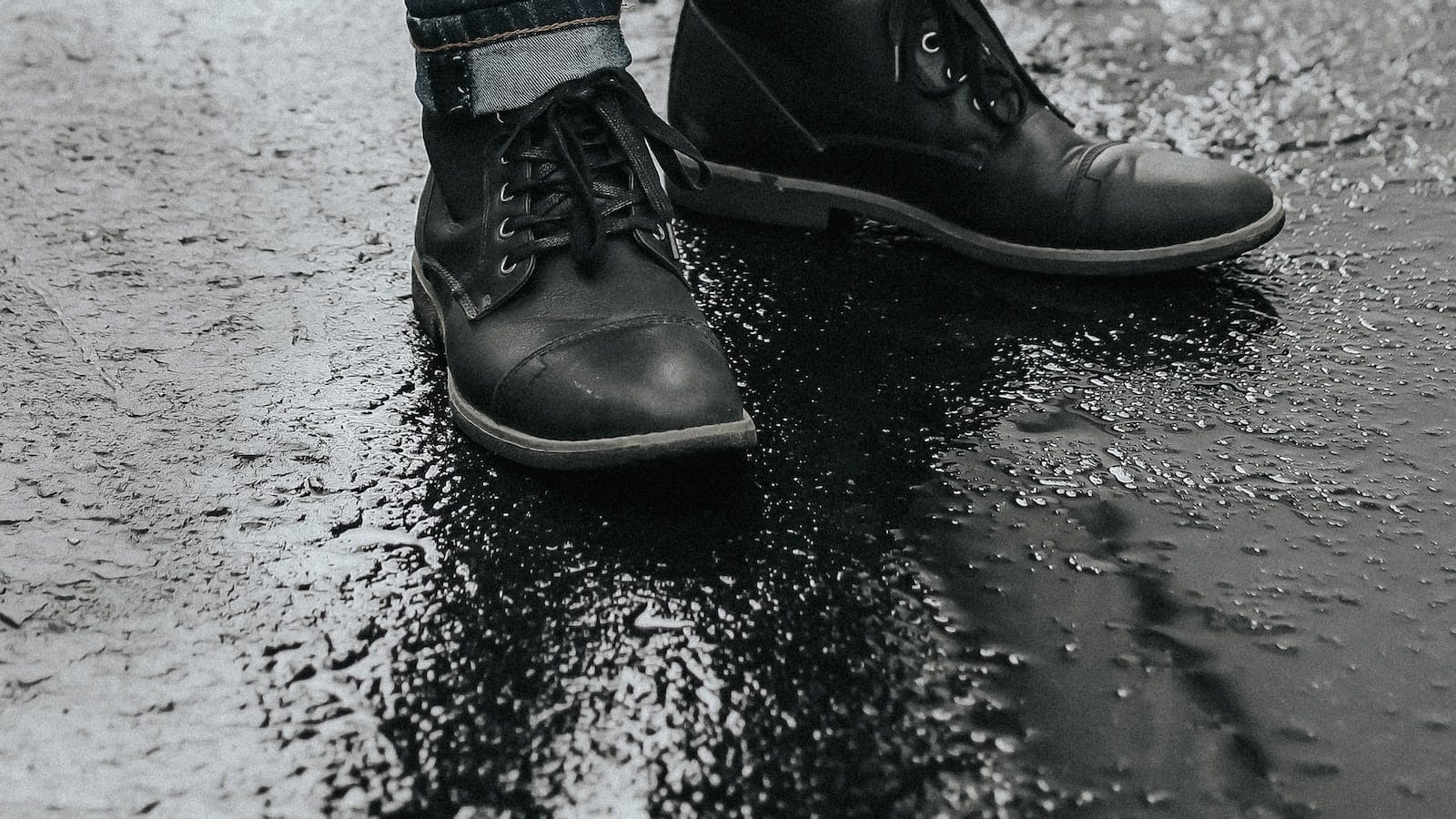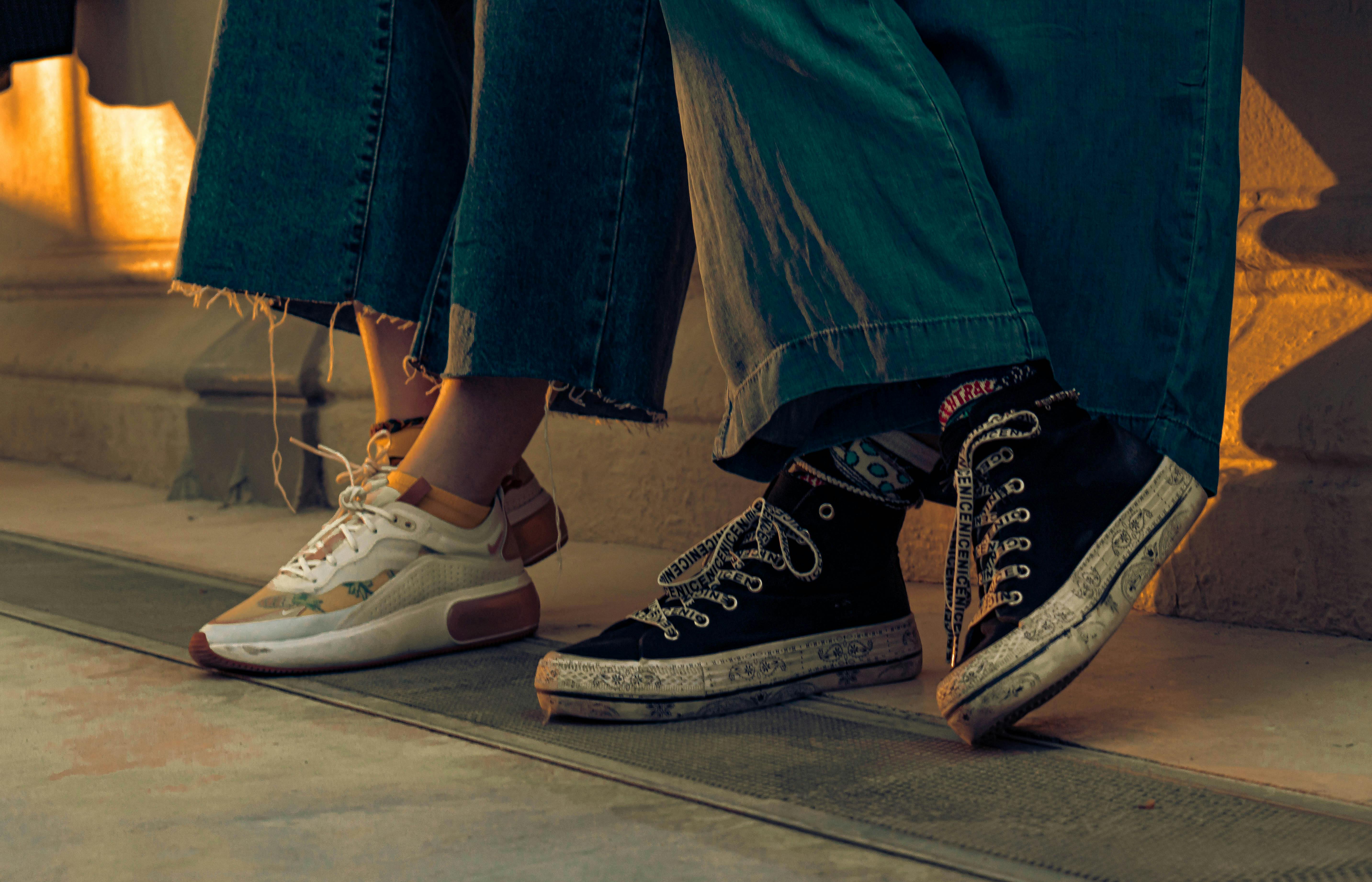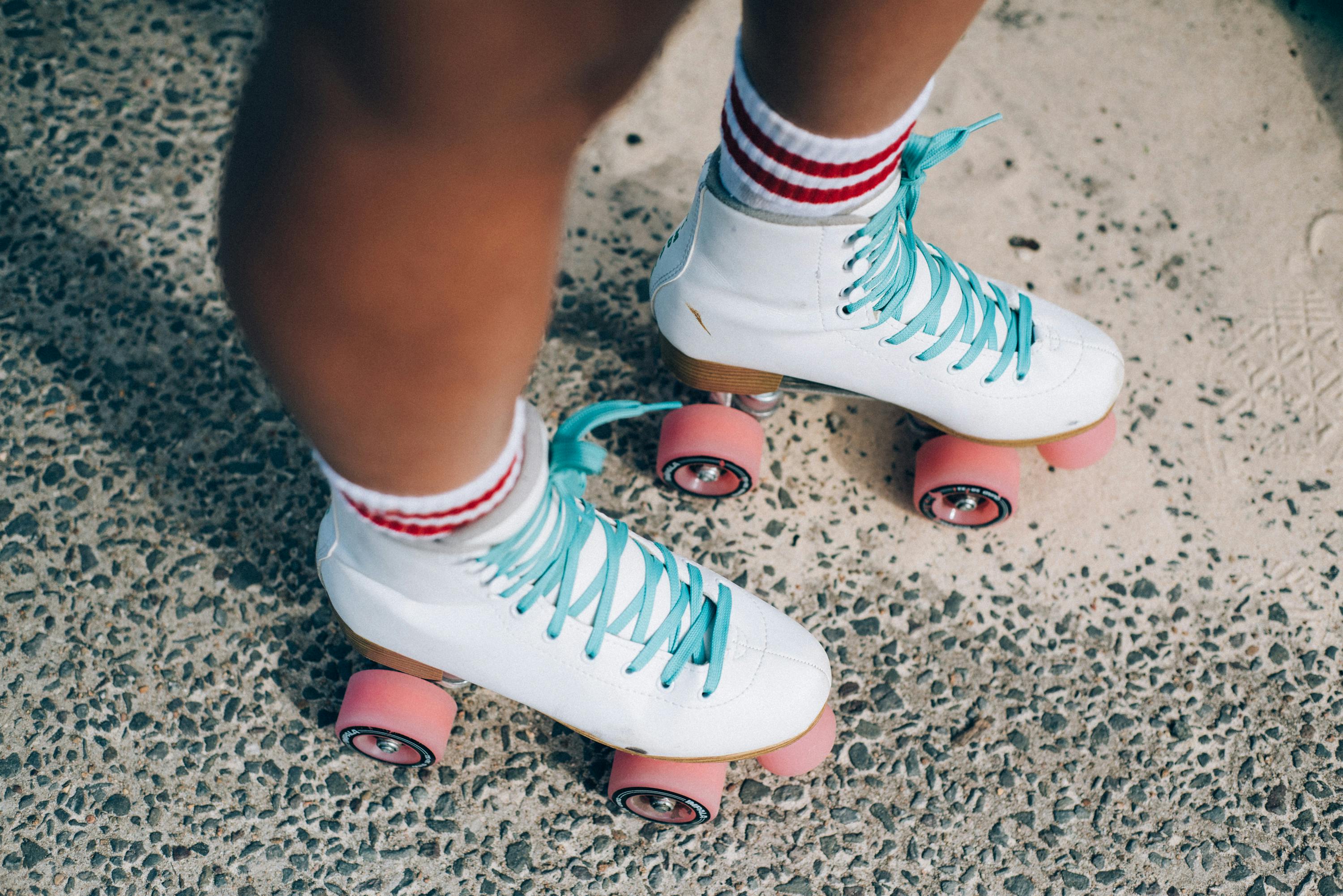Why Do My Legs Ache After Wearing Compression Socks

Compression socks are a popular choice for those who experience leg pain or discomfort. The special design of the socks helps to reduce swelling, support muscles, and increase circulation, but they can sometimes cause aches and pains in the legs. In this article, we will examine why your legs may ache after wearing compression socks and what can be done to prevent or reduce this discomfort.Leg aches after wearing compression socks can be caused by several factors, including wearing the wrong size of sock, not allowing enough time for your body to adjust to the pressure of the socks, and wearing them for too long. Additionally, people with circulatory problems or nerve damage can experience leg aches after wearing compression socks as a result of poor blood circulation.
Compression Socks and their Benefits
Compression socks have become increasingly popular as a way to improve health and well-being. Compression socks are worn to help improve circulation, reduce swelling, and provide support for people with medical conditions such as diabetes, varicose veins, edema, and deep vein thrombosis. Compression socks work by gently squeezing the leg muscles, providing more support for the feet and legs. This helps to reduce fatigue and discomfort while also increasing blood flow throughout the body.
The benefits of compression socks go beyond just improved circulation. Wearing compression socks can help to reduce pain in the legs caused by standing or sitting for long periods of time. Additionally, they can help to prevent cramping in athletes who are engaging in physical activity. Compression socks can also be beneficial for those who are pregnant or have cardiovascular issues as they provide extra support in these sensitive areas.
Compression socks are also great for those who want to prevent varicose veins from developing or worsening. By providing extra support around the veins, compression socks can help to reduce the risk of developing varicose veins. Additionally, they can be beneficial for people with existing varicose veins as they reduce swelling in the area and increase blood flow.
Finally, wearing compression socks is a great way to keep your feet and legs feeling comfortable throughout the day. The gentle squeeze that compression socks provide helps keep feet feeling energized even after long hours on your feet or when sitting at a desk all day. This increased circulation helps keep feet feeling comfortable even after long periods of time without relief from shoes or other footwear items.
Overall, compression socks can provide many health benefits including improved circulation, reduced swelling and pain relief in the legs and feet, prevention of varicose veins from forming or worsening, and overall comfort throughout the day. They are an easy way to help improve health and well-being without making any major lifestyle changes!
Different Types of Compression Socks
Compression socks are designed to help improve circulation and reduce swelling in the feet and legs. They can be used for a variety of conditions, including varicose veins, edema, and chronic venous insufficiency. There are several different types of compression socks available, each with their own unique features and benefits.
Graduated compression socks are one of the most popular types of compression socks. These socks provide the greatest amount of pressure at the ankle and gradually decrease as they go up the leg. This graduated pressure helps improve blood flow back to the heart while reducing swelling in the feet and legs.
Anti-embolism stockings are another type of compression sock, often used in medical settings following surgery or a long period of bed rest. These stockings have a slightly higher level of compression than regular graduated compression socks, helping to reduce the risk of deep vein thrombosis (DVT).
Compression tights are designed to provide support from your ankles all the way up to your hips. They offer a tighter fit than regular graduated compression socks, providing more even pressure throughout your legs and torso. Compression tights can be especially helpful for those who suffer from chronic pain or discomfort in their lower body due to poor circulation or injury.
Sports compression socks are similar to regular graduated compression socks but with an added layer of cushioning for comfort during physical activity. They help reduce fatigue by improving circulation and muscle support during exercise or sports activities.
For those who need additional support or protection during certain activities, specialized compression sleeves may be an option. These sleeves provide extra cushioning for areas such as the ankles, heels, toes, and arch area that may be prone to injury or strain during physical activity.
No matter which type you choose, wearing compression socks can help improve circulation and reduce swelling in your legs and feet. Talk to your doctor about which type may be right for you depending on your specific condition or activity level.
Compression Socks: What Are They?
Compression socks are specially designed, close-fitting socks that apply pressure to your lower legs. This pressure helps reduce swelling, improve blood circulation, and provide comfortable support for strained muscles and joints. They come in a variety of styles, materials, and sizes to suit different needs and preferences.
Benefits of Wearing Compression Socks
The benefits of compression socks include increased blood circulation, improved muscle recovery after exercise, decreased pain from swollen ankles or varicose veins, and improved overall foot health. They may also help with certain medical conditions such as lymphedema or deep vein thrombosis. Wearing compression socks for long periods of time can also help people with diabetes manage their blood sugar levels better.
How to Choose the Right Compression Sock
When choosing the right compression sock for you, it is important to consider the fit, material, level of compression, and length. The fit should be snug but not too tight; it should feel like a second skin. The material should be breathable and moisture-wicking to keep the feet cool and dry throughout the day. The level of compression should be appropriate for your needs; if you are looking for general support choose a low-level compression sock or if you are looking for more intense relief choose a higher level compression sock. Finally, consider the length; knee high socks provide more coverage than ankle length socks but may be uncomfortable in hot weather.
Are Compression Socks Good for Everyone?
Compression socks are a great way to improve circulation and alleviate pain and discomfort. They can be beneficial for people of all ages, from the very young to the elderly. They can be used to reduce swelling, improve mobility, and reduce the risk of injury. The benefits of compression socks extend beyond just those who are active or exercise regularly.
Compression socks can be helpful for people who are on their feet all day such as nurses, chefs, waiters or construction workers. The added support they offer helps to reduce tiredness and fatigue which can be caused by standing for long periods of time. They also help prevent varicose veins and spider veins from forming.
Those who travel frequently can benefit from wearing compression socks too as they help reduce swelling in the feet and ankles that is caused by sitting in one position for long stretches of time. This is especially important if you are traveling by plane as air pressure changes can cause discomfort in your legs.
Compression socks are also an excellent choice for pregnant women who often experience swelling in their legs due to increased water retention during pregnancy. Wearing compression socks helps to reduce this swelling which can help make them more comfortable during this time.
Finally, compression socks are also beneficial for those who suffer from poor circulation or diabetes as they help improve blood flow throughout the body which helps to alleviate pain and discomfort associated with these conditions.
All in all, compression socks offer a variety of benefits that make them an excellent choice for anyone looking to improve their health and wellness. Whether you’re an athlete looking for improved performance or a traveler looking to prevent swollen feet, there’s a pair of compression socks that can help you achieve your goals!

How to Reduce Leg Aches After Wearing Compression Socks
Compression socks are designed to help improve circulation in the legs and feet. They can be beneficial for those who suffer from swelling, varicose veins, and other leg issues. However, they can also cause discomfort and leg aches after wearing them. To reduce the aching, there are some steps you can take.
First, it is important to make sure your socks fit correctly. Compression socks should be snug but not tight, and they should not leave marks on your skin. If you have a pair that doesn’t fit properly, it is best to replace them with a size that fits better.
The next step is to wear the compression socks for a shorter period of time at first. Start out wearing them for an hour or two at a time and gradually increase the amount of time until you find the maximum amount of time that is comfortable for you.
You can also help reduce leg aches by doing exercises while wearing compression socks. These exercises can help improve circulation in your legs and feet as well as provide relief from stiffness and discomfort caused by the socks themselves. Some examples of good exercises include calf raises, calf stretching, ankle circles, ankle pumps, toe pulls, and heel lifts.
It is also important to take breaks throughout the day when wearing compression socks. Take them off every few hours so your legs can rest before putting them back on again or switching out with another pair of regular socks if needed. This will help give your legs a chance to recover from any potential discomfort caused by the compression socks themselves.
Finally, make sure you are drinking plenty of water throughout the day when wearing compression socks as dehydration can contribute to leg aches and discomfort in general. If you’re having trouble drinking enough fluids throughout the day then try adding some electrolytes or other hydration supplements to your diet as well as increasing your intake of fruits and vegetables that contain natural electrolytes such as bananas or leafy greens like spinach or kale.
By following these steps you should be able to reduce any leg aches caused by wearing compression socks while still getting all the benefits that come along with using them such as improved circulation in your legs and feet!
Proper Care and Maintenance of Compression Socks
Compression socks are designed to help reduce swelling, improve blood circulation, and provide support for your lower legs. With regular wear, proper care and maintenance of compression socks is essential for optimal performance. Here are a few tips to keep your compression socks in good condition:
Wash Regularly
Compression socks should be washed after every wear. Washing removes sweat and body oils that can cause bacteria to build up on the fabric. It’s best to hand wash compression socks with a mild detergent and warm water. Do not put them in the dryer as this can damage the fabric.
Dry Thoroughly
After washing, lay your compression socks flat on a towel to dry. Avoid hanging them up as this can stretch out the fabric. Never put them in the dryer as heat can damage the fibers in the fabric.
Check for Wear and Tear
Regularly check your compression socks for wear and tear, especially around the toes and heels where they rub against your shoes. If any holes or tears appear, it’s best to replace them right away.
Store Properly
When not in use, store your compression socks properly by rolling them up neatly and placing them in a drawer or box. This will help keep them from becoming stretched out or damaged.
<
Tips on Finding the Best Fit for Your Compression Sock
Finding the right compression sock for your needs can be challenging. There are many different styles, sizes, and materials available on the market. It’s important to take your time and do your research to find a sock that fits you correctly and provides the support you need. Here are some tips to help you find the best fit for your compression sock:
Measure Your Legs
Take measurements of both of your legs in order to find a sock that is the right size. Measure from the middle of the calf to the ankle bone, then use this measurement as a guide when selecting a sock. You should also take into account any differences between your left and right leg; if one leg is larger than the other, it may require a different size sock.
Choose a Material
The material of your compression sock can make a big difference in how comfortable it is and how well it supports you. Look for socks that are made from breathable materials like cotton or nylon, which will help keep your feet cool and dry. You should also choose socks with moisture-wicking properties to ensure that they stay dry during exercise.
Consider Your Activity Level
Your activity level should be taken into consideration when choosing a compression sock. If you are an active person who enjoys running or playing sports, look for socks with more cushioning and extra support features. For people with sedentary lifestyles, basic compression socks may be sufficient.
Think About Style
Compression socks come in many different styles, so make sure to choose one that fits with your lifestyle. If you want something discreet that won’t draw attention, look for neutral colored or patterned options that blend in easily with clothing. On the other hand, if you want something bolder and more eye-catching, there are plenty of brightly colored options available.
By following these tips, you can find the perfect compression sock for your needs. With a little bit of research and patience, you can find a pair that provides comfort and support throughout all of your activities!

Conclusion
Compression socks are a great way to improve circulation in the legs and reduce pain and fatigue. However, it is important to note that these socks can cause discomfort or aches in the legs if not worn correctly or for too long. It is important to ensure that the socks are properly fitted and not worn for an excessive amount of time. When used correctly, compression socks can provide relief from leg aches and help improve overall circulation.
It is also important to note that compression socks should be worn with caution as certain medical conditions may prevent one from wearing them. If you experience any pain or discomfort while wearing compression socks, it is recommended to remove them immediately and consult your doctor. Ultimately, compression socks can provide many benefits but may also come with some risks if used incorrectly.
In conclusion, compression socks can be a great way to reduce leg aches and improve circulation. However, they should be worn with caution, as they may cause discomfort if not worn properly or for too long. Always consult your doctor before using compression socks, especially if you have any preexisting health conditions that could potentially be affected by wearing them.
